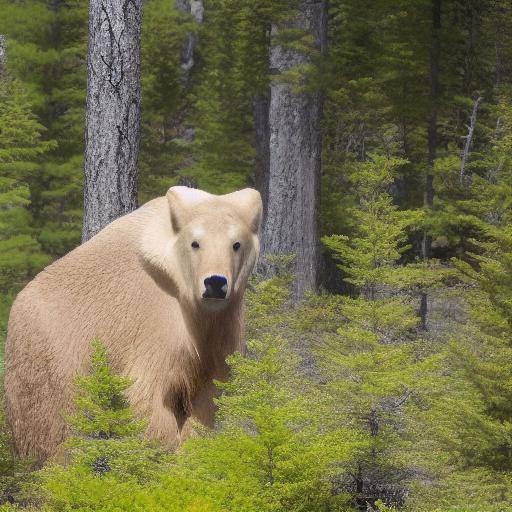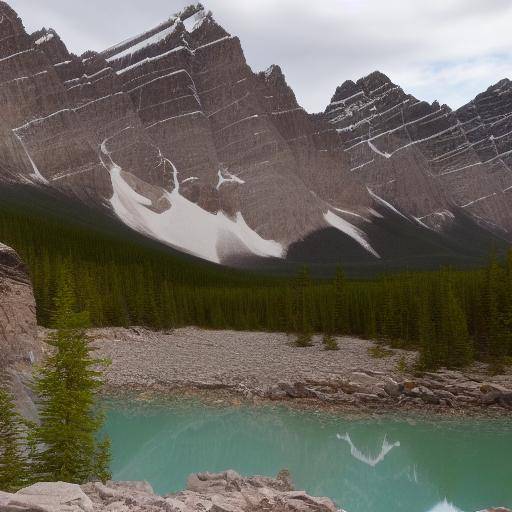
Banff National Park, located in the majestic Rocky Mountains of Canada, is a natural refuge of exceptional beauty. Distinguished by its stunning landscapes and rich biodiversity, Banff is an emblematic destination for ecotourism in Canada. In this article, we will explore the relationship between Banff, ecotourism and environmental conservation, as well as efforts to protect native ecosystems and species in this unique region of the world.
Introduction
The Banff National Park, the oldest in Canada, houses a wide variety of ecosystems ranging from mountain peaks to alpine valleys and lush forests. This natural environment provides a vital habitat for a diversity of flora and fauna species, some of which are considered at risk or in danger of extinction. The conservation of this natural heritage is essential to ensure its long-term preservation.
In this article, we will analyze how ecotourism in Canada, particularly in Banff National Park, can contribute to environmental conservation and protection of native ecosystems and species. We will explore both the challenges and opportunities faced by this paradisiacal destination, as well as practical advice for those who wish to enjoy their natural wonders in a sustainable manner.
History and Background
The Banff National Park was established in 1885, becoming Canada's first national park and the third in the world. Since then, it has been a conservation symbol and a predilect destination for ecotourism in Canada. Its rich historical legacy and commitment to environmental preservation have made it a model for the sustainable management of protected areas around the world.
Coinciding with the boom of ecotourism, the number of visitors to Banff has steadily increased over the years, which has posed challenges in terms of managing outdoor recreation, biodiversity conservation and preservation of the natural landscape. Despite these challenges, Banff has implemented innovative measures to balance conservation with tourism, demonstrating that harmonious coexistence between environmental protection and human enjoyment is possible.
Analysis in Deep
Banff's attractiveness lies in its abundant diversity of species, from majestic alces to grizzly bears and wolves. However, increased tourism can exert pressure on these animals and their habitats, highlighting the importance of careful management of tourist activities to minimize the impact on wildlife. The conservation of native species is a vital element in ecotourism in Canada, as protecting these natural treasures not only guarantees their survival, but also enriches the visitor's experience.
The growing awareness of the importance of environmental sustainability has also led to increased demand for sustainable tourism options in Banff. Travelers are looking for more and more authentic experiences, allowing them to enjoy nature in a respectful and responsible way. This demand has prompted tourist operators to offer programs and activities that promote environmental conservation and appreciation for local biodiversity.
Comprehensive review
Compared to other tourist destinations, ecotourism in Canada, particularly in Banff, has the unique advantage of having an exceptionally intact and diverse natural environment. This provides unique opportunities for wildlife observation, hiking in remote landscapes and participation in cultural activities that highlight the importance of conservation. Continuous efforts to preserve this environment require collaboration among park managers, local communities, visitors and other stakeholders. The active participation of all those involved is critical to ensuring that ecotourism in Canada, especially in Banff, is sustainable in the long term.
Comparative analysis
Compared to other ecotourism destinations, Banff is distinguished by its vast expanse of protected land and its unwavering commitment to environmental conservation. Through wildlife monitoring programs, ecological restoration initiatives and strict regulations, Banff strives to maintain the balance between the preservation of its natural resources and the promotion of sustainable tourism.
Practical Tips and Recommendations
For those who wish to explore Banff's beauty in a conscious and respectful way, it is important to adopt responsible visitor practices. Some practical tips include:
- Respect wildlife by staying at a safe distance and avoiding interfering in their natural behavior.
- Follow the rules of the trails and keep the trash and waste in designated areas.
- Support tourism operators and experience providers that have a clear commitment to environmental sustainability.
- Participate in environmental education activities that help to understand the importance of conservation in Banff.
Industry Perspectives and Expert Reviews
Within the ecotourism industry in Canada, Banff is recognized as an outstanding example of how to successfully manage the conservation of nature and responsible tourism. Experts on environmental conservation and tourism sustainability have praised Banff's efforts to balance the preservation of its ecosystems with the satisfaction of visitors, stressing the importance of comprehensively addressing the challenges of managing a world-renowned tourist destination.
Case Studies and Practical Applications
The Banff approach to environmental conservation has generated tangible results, such as the recovery of populations of endangered species and the preservation of vital habitats. These successes show that a proactive approach to conservation can generate significant benefits for biodiversity and the environment in general.
Future Trends and Predictions
As environmental awareness and demand for sustainable tourism continue to increase, Banff is expected to position itself as a global model of responsible conservation and tourism practices. Innovations in tourism management, the use of sustainable technologies and multi-stakeholder collaboration will be crucial to ensuring that Banff not only preserves its natural beauty, but also shares it in a sustainable manner with future generations.
Conclusion
Conservation in Banff, through ecotourism in Canada, represents a delicate balance between the preservation of nature and the promotion of human enjoyment. The protection of native ecosystems and species is critical to ensuring the long-term sustainability of this paradisiacal destination. By adopting a holistic approach that involves local communities, visitors and conservation experts, Banff can remain an inspiring example of the harmonious coexistence between tourism and environmental conservation.
FAQs about Banff, Ecotourism in Canada and Environmental Conservation
What is the importance of Banff for conservation in Canada?
Banff plays a key role in conservation in Canada by protecting a wide range of native ecosystems and species. Its focus on sustainable tourism management and the preservation of wildlife makes it a model for other protected areas in the country.
What are the main challenges facing Banff in relation to environmental conservation?
Key challenges include the management of increased tourism, the protection of wildlife from human activities and the maintenance of ecological integrity of ecosystems in a climate change context.
How can I participate in ecotourism in Banff in a responsible way?
When visiting Banff, it is crucial to follow established standards for wildlife protection, use authorized trails, minimize waste generation and support sustainable tourism providers. In addition, reporting on local flora and fauna helps to appreciate and respect the natural environment.
What is the impact of climate change on Banff conservation?
Climate change poses a significant threat to Banff ecosystems, as it can alter species distribution, increase the risk of forest fires and affect the availability of vital resources for wildlife. Adaptation to these changes is crucial for long-term conservation.
Are there opportunities to actively contribute to conservation in Banff as a visitor?
Yes, there are volunteer programs and citizen participation that allow visitors to engage directly in conservation projects, ecosystem restoration and species monitoring. These activities give visitors the opportunity to contribute actively to the protection of Banff.
How can Banff inspire other tourist destinations to focus on conservation?
The successful management of Banff in terms of conservation and ecotourism can serve as an inspiring model for other tourist destinations, showing that it is possible to balance the protection of the environment with the satisfaction of visitors. Your experiences and best practices can be replicated elsewhere.
What is the long-term vision for conservation in Banff?
The long-term vision for Banff is to maintain its rich biodiversity, healthy ecosystems and natural beauty for future generations. This includes adapting to environmental challenges, promoting sustainable practices and promoting greater awareness of conservation.
Conclusion
Conservation in Banff is a collective effort that requires the active participation of the local community, visitors, authorities and conservation experts. Through ecotourism in Canada, Banff demonstrates that the protection of ecosystems and native species is not only possible, but also enriches tourist experiences. By understanding the importance of preserving this natural treasure, travelers can contribute to their conservation while enjoying their wonders. Banff offers an inspiring example of how tourism and conservation can complement each other, and its lasting preservation legacy will continue to be a beacon for global environmental conservation.


